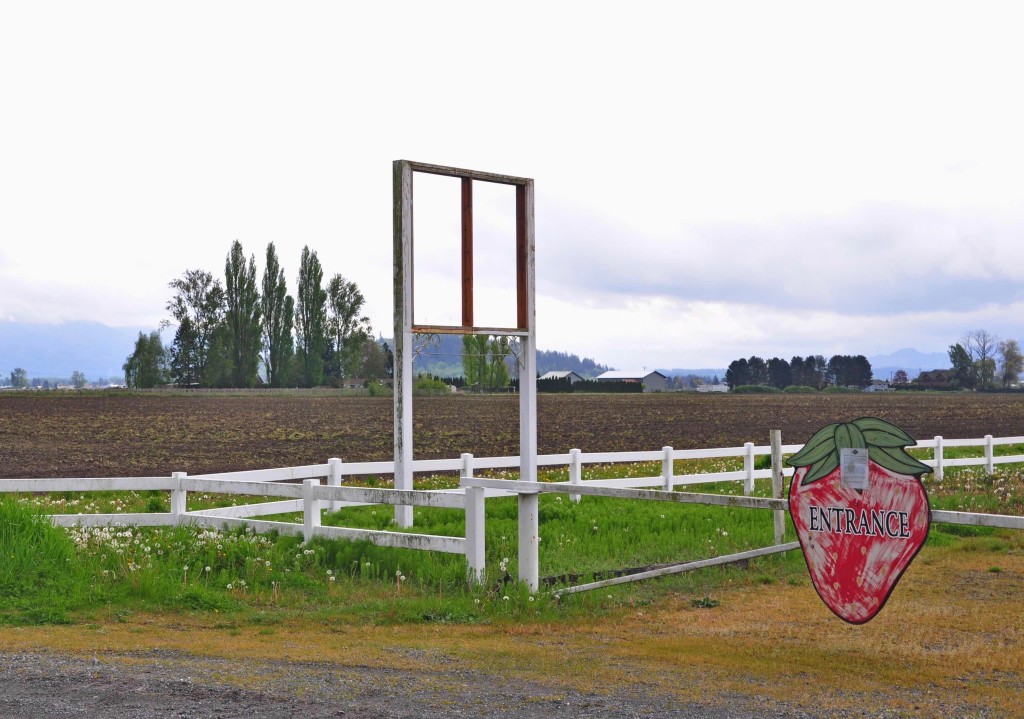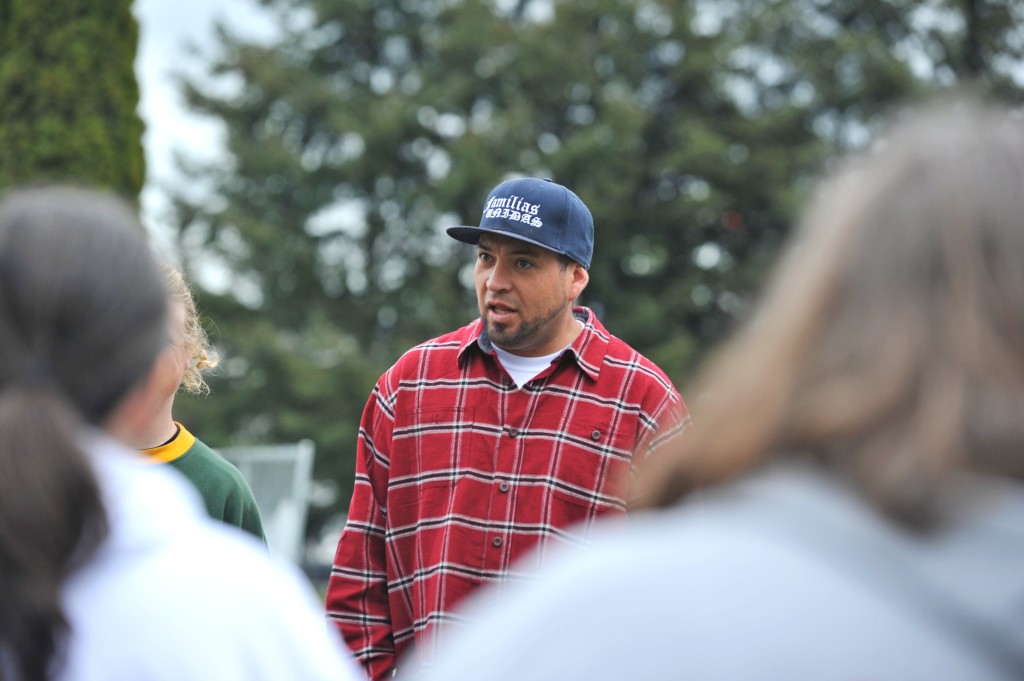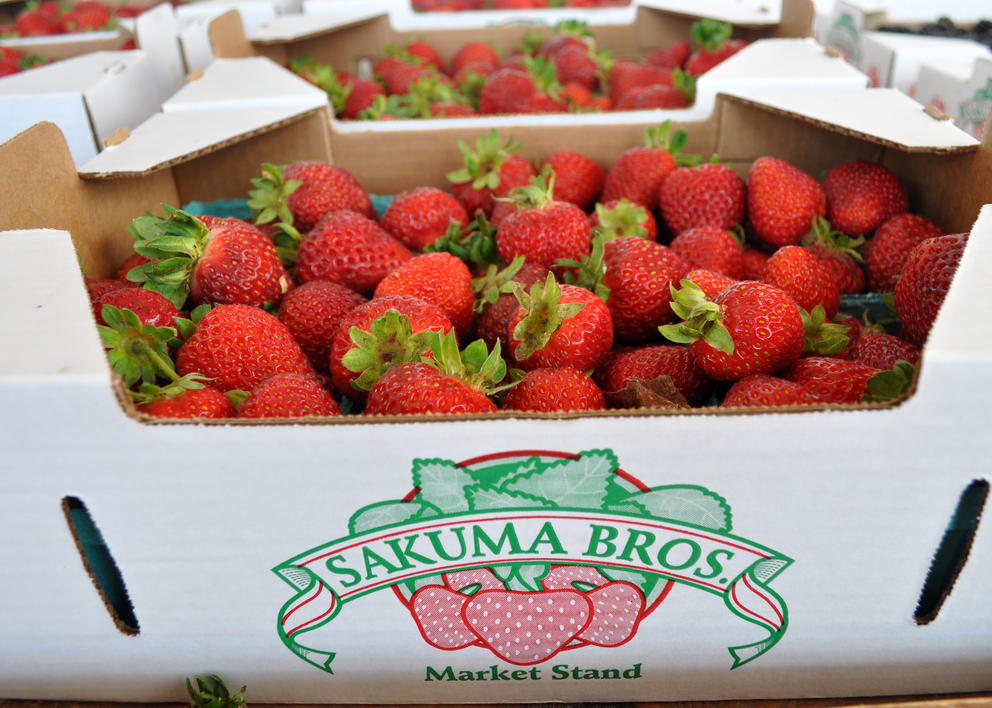On the side of a dusty road just south of Bellingham, a Northwest story of fruit, farms and labor unfolded.
There on a Friday afternoon earlier this month, a small group of activists and labor organizers staged a symbolic trespass onto the property of Sakuma Brothers farms, demanding to meet with management. The event highlighted a month of efforts along the West Coast and elsewhere that produced nearly 20 new farmworker organizing committees.
The activity could be crucial to organizers’ efforts to pressure Sakuma, one of the state’s biggest berry growers to give workers new contracts. But after three years, it’s unclear whether efforts to gain consumer support for boycotts of growers are making progress.
The movement started in 2013, when a group of several hundred mostly indigenous Mexican berry pickers staged repeated strikes at Washington farms owned by Sakuma. Workers demanded higher wages and better working conditions, and especially for the company to recognize a group they had formed, Familias Unidas por la Justica (FUJ — Families United for Justice) and negotiate a union contract.
By 2015, workers from Baja Mexico to the Canadian border were involved, leading The Nation to dub the movement “the Pacific Coast Farm-worker Rebellion.” Organizers, meanwhile, had expanded the boycott to include Driscoll’s, the national berry giant that buys Sakuma fruit for resale, and Haagen-Dazs, which uses Driscoll’s fruit in its ice creams. The activists want Driscoll’s to allow independent unionization at its farms in Mexico.
At Sakuma, though, the drive for a union contract has yet to produce any sort of an agreement, despite some victories for workers like an $850,000 settlement of a court case over back pay for employees’ rest breaks.
A Sakuma spokesman said that the company didn’t object to the idea of workers organizing, but that it wouldn’t negotiate with FUJ because the group doesn’t represent Sakuma workers. “If the employees wish to organize, of course we would sit down with them,” said Roger van Oosten, relaying a message from Sakuma CEO Danny Weeden. Van Oosten is head of a Seattle PR firm; Sakuma staff directed inquiries to him.

Last year, however, Sakuma employees had limited success when they tried to do just that. Over the course of four work stoppages, negotiations were limited to specific items like the provision of cold drinking water and an increase in bonuses linked to production, according to Rosalinda Guillen, who directs a nonprofit that works closely with FUJ. As to the supposed lack of FUJ support among workers, she said, “Those were all members of Familias Unidas.”
Van Oosten insisted Sakuma employees make an average of $17.50 per hour, depending on productivity. He showed pay stubs for two workers who had over the course of a week earned between $17 and $35 per hour, part of a new pay structure reportedly put in place last year after Weeden took over. Guillen conceded that while pickers in their physical prime can make that much at the height of the season, most workers make much less most of the time.
Broader support for the boycotts is hard to judge, but appears nascent at best: An FUJ spokesperson confirmed last week that so far they haven’t had any luck in convincing major grocery chains to join them.
Still, attitudes have changed since the first strikes, said Ramon Torres, head of FUJ and a former Sakuma employee.
“Three years ago, people were scared,” Torres said, making it difficult to build support. Workers saw that many of the first organizers, including Torres himself, had been fired after starting to call for a union, including Torres himself. But, Torres said, now even workers from outside Sakuma are expressing interest in joining, or forming their own unions. Bringing in workers from other fields, Torres said, means that now in addition to a boycott of berries, the group is considering boycotts or strikes of agricultural sectors producing at least two other products.
At the Sakuma property in Bellingham — a packing warehouse — the recent protest unfolded as much an act of theater as overt disruption. Just off company property, leaders of FUJ and allied groups gave muted speeches to a cluster of perhaps a dozen people. Then about half the demonstrators carried a banner up to a gatehouse, where a white-haired guard told them they were trespassing.
Organizers led the group back off the property, gave another round of speeches, and declared they would walk straight into company offices.
The group walked back to the gatehouse and past the guard, who dutifully followed them up the plant’s long driveway while another employee called the police. About halfway to the building, the group turned around. A few minutes later, three police cars pulled up, but left after seeing the group had retreated from company property.
The guard had given the banner-carriers a phone number for an appointment. When the protesters dialed the number, it went to voicemail. Holding up a cellphone, Torres recorded a demand for a meeting, and the protesters chanted a message into the phone before dispersing.

Like so many institutions faced with dissent, Sakuma’s strategy seems to be to act as if nothing is happening and wait for its hope to come true. And as the tiny group waved signs outside the silent warehouses, witnessed only by the security guard and a few passing drivers, it seemed to be working, at least for now.
But, three years in, the movement has demonstrated a measure of staying power. With boycott committees in 41 cities, mostly along the West Coast but also in Chicago, Detroit and Washington D.C., the question is whether FUJ and its partner groups will be able to convert that organizing success into broader sympathy from consumers.



